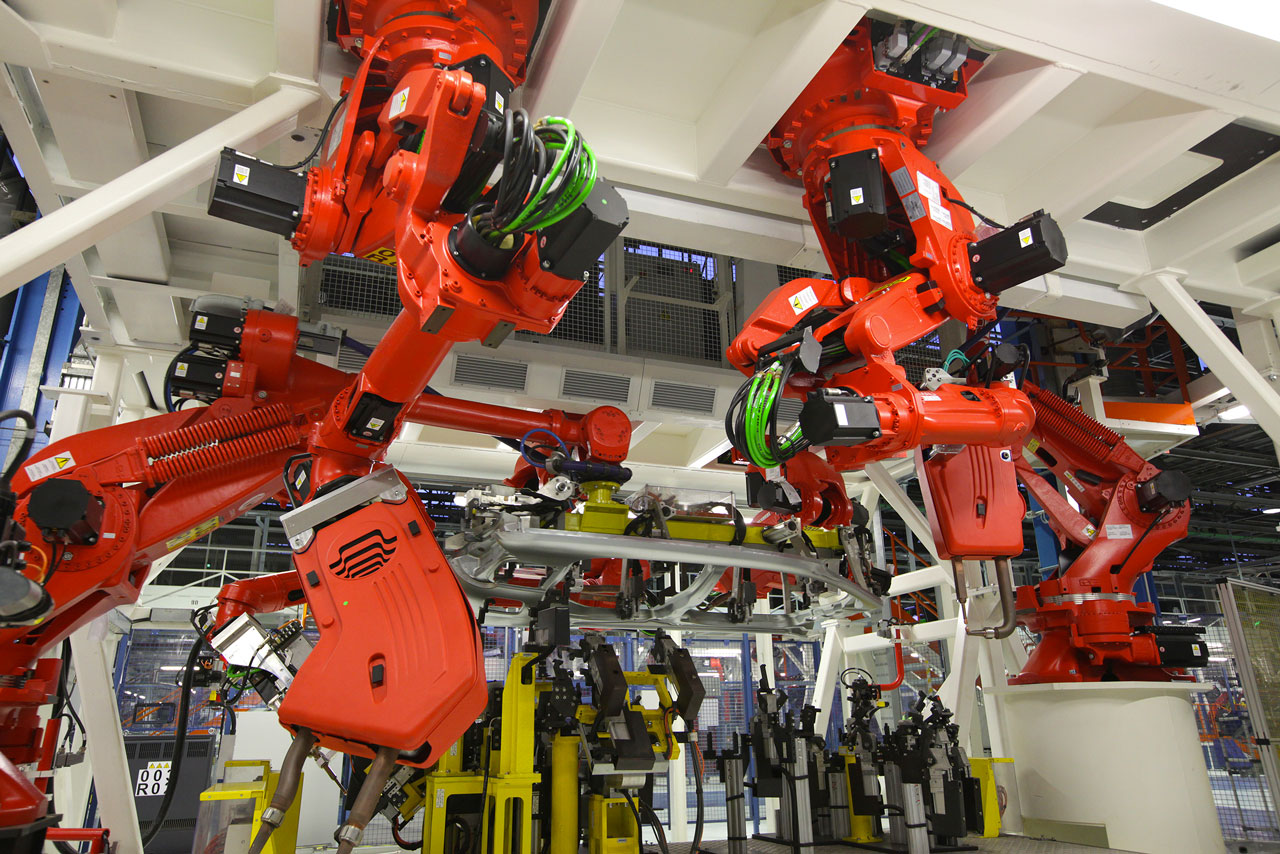

Contact: rif-cea@echord.eu
RIF@CEA is located within the premises of CEA, LIST, Interactive Robotics Laboratory in Saclay, about 20km south west from Paris. It can be easily accessed from Paris and its two international airports using RATP and SNCF train services.
CEA (Atomic Energy Commission) is a French government-funded scientific and technological research organisation. CEA is active in three main fields: energy, information and health technologies, and defence and national security.
CEA LIST is a research institute inside CEA. Located at the heart of Saclay area (Paris region), the CEA LIST Institute focuses its research activities on developing innovative technologies for smart and complex systems. Its R&D programmes, with potentially major economic and social implications, centre on interactive systems (ambient intelligence), embedded systems (architecture, software and systems engineering), sensors and signal processing (industrial control systems, health, security and metrology). Dedicated to technological research, CEA LIST’s more than 700 researchers and technicians strive to encourage innovation and technology transfer through long-term industrial partnerships. The dynamism of the institute’s teams, their project-based culture and their consistently high standard of scientific excellence underpin this objective. CEA LIST is a natural partner for industry seeking breakthrough technology, from the initial concept down to working demonstrators.
The Interactive Robotics Laboratory of CEA LIST includes 45 researchers and PhD students. Its research activities focus on service robotics, remote handling and collaborative robotics, with applications in the fields of energy (nuclear, oil&gaz), industry and health (surgery and rehabilitation). Robotics research at CEA initially started in the 1960s and 1970s to address the need of remote manipulation of nuclear material in environments non accessible to humans. Force feedback telerobotics is now also used in other hazardous environments like tunnel boring, space or offshore. In the industrial context, the research performed at CEA anticipates and accompanies the current evolution of production from large scale manufacturing of standard items to customized and individualized products. This evolution requires the development of more dextrous and easily programmable robots which can be used as versatile, reconfigurable and intelligent means of production. On the other hand, collaborative robotics in permanent interaction with humans offers another solution. By providing a force and gesture assistance to the operators, collaborative robots allow to minimize musculoskeletal disorders caused by manual tasks while maintaining human flexibility and adaptability. The Interactive Robotics Laboratory also works on future service robotics, with focus on personal assistance requiring more dexterity, mobility and autonomy (intelligent systems). Finally, the force feedback, haptics and cobotics technologies developed in the laboratory are applied in surgery and rehabilitation. The laboratory is structured to provide technological innovation integrated into industrial prototypes. Core technologies are new robotic architectures, high performance actuation, force and supervised control, method and software tools. Research activity is organised in 3 main applicative themes: remote handling, collaborative robotics and autonomous dextrous manipulation.
A 360 degree tour through the facility is available on YouTube
Resources
Hardware
· Tele and co-robotics surgical platform for MIS, open surgery and surgeons training
o High performance bi-manual master station for telesurgery and virtual surgery training (integrated platform with two 6 DOFs hybrid haptic interfaces, among which one with active prop allowing realistic simulation of active tools, audio and visual feedback)
o Two advanced high transparency 6 DOF robots usable as collaborative robots or telerobotic slave robots
o Representative surgical environment composed of an adjustable operating table, a patient mock-up
o An endoscopic trainer (pelvitrainer, e.g. a Laprotrain) and an endoscope(and a Viky EP motorized endoscope positionner if the pelvitrainer is not equipped with a camera)
· Rehabilitation robotics platform
o Two 7 DOFs high performance ABLE arm exoskeletons.
· Assistive robotics platform for disabled people
o One Kinova 6 DOF Jaco robot equipped with a 3 fingers gripper and mounted on a Robosoft Robulab 10 mobile platform
o A fully equipped 200 m2 apartment representative of future living environments of disabled people: MobileMII (MobileMii contains home domain and video surveillance equipment usable for technical validation)
· Collaborative robotics and telerobotics platform for industrial applications
o One A7.15 RB3D 7 DOFs collaborative robot
· VR platform for virtual prototyping and training for industrial applications
o One 3D TV equipped with a real time simulation environment for physical interactions.
Software
· Access to XDE interactive mutli-physics simulation software runtime licences. XDE is a software suite developed at CEA since more than 12 years and featuring interactive multi-physics simulation of multibody systems, rigid and (simply) deformable objects and contacts as well as a biomechanical digital human able to interact with its environment. Composed of different modules (XDE Physics, X-Fitting, X-Robotics, X-Ergonomics), XDE has applications in Virtual Prototyping, ergonomy studies, maintenance in virtual and mixed reality, training to dexterous gestures, robotics and cobotics simulation
· Access to TAO (Computer Assisted Telerobotics) runtime licences. TAO is a telerobotics controller developed at CEA since more than 20 years and featuring force feedback master/slave control, robotics trajectory control, cartesian/joint position control, virtual Mechanisms, position/force homothetic setting, gripper pursuit with camera, 3D graphical supervisor.
· Access to SCORE 3D supervisor runtime licences
· Access to the AVISO assistive robotics programming environment Entail
Services
· Advices on the management of intellectual property rights
· Assistance to technology transfer
· Advices on how to deal with ethical, legal and societal issues in robotics
Examples of work undertaken in beta test phase:
· Development and test of novel sensors for surgery
· Development and test of novel intra-corporeal dexterous surgical tools
· Test of rehabilitation cursus
Key personnel
Dr. Christophe Leroux is business manager for ICT and Health application. He obtained a PhD in 1990 in artificial intelligence. He has expertise in research in algorithms for robotics (supervision, computer vision and intuitive MMI). Being a member of the of EUROP board (representing professional service robotics), he is involved in the elaboration of the white paper of the robotics PPP, member of the RCC Flagship, of the scientific board of IFR and of the scientific committee of the CENrob (robotics for handicapped people).
Dr. Christine Rotinat-Libersa,R&D project manager, received her Ph.D. degree in Mechanical Engineering and Microrobotics in 2001. She is doing research in modelling and design of mini and micro robotic devices, for industrial and medical applications (post-buckling bi-stable actuators, smart material-based micro-actuators, compliant structures and micromechanisms).
Dr. Catherine Bidard. Since 1991 she has been working on mechanical design (kinematics, dynamics, modelling, simulation, calibration) and been involved in several developments of robotics arms. Her current research topics are human-robot collaboration, model-based monitoring of robots, kinematics, and dynamics design of robots.
Alain Riwan has been research project manager in robotics since 1984. He is involved in the mechanical conception of numerous robotics platforms for the industry, haptic, remote handling and holds several exploited patents in this field (Haption). He is now involved in medical robotics (surgery, physiotherapy). He is a senior expert and consultant for CEA.
Dr. Franck Geffard received a Ph.D in Telerobotics 2000. He is project leader of TAO2000, an industrial generic multi-robots and multi-clients controller and involved in the technological transfer of this controller. His current research interests are intelligent co-working, intention detection and more generally force control.
Dr. Florian Gosselin, R&D project manager, received a Ph.D. in Mechanical Engineering in 2000. He supervised the design and mechanical development of numerous prototypes of haptic interfaces (serial and parallel architectures, poly-articulated and tensed cable structures, rigid and compliant joints, non-redundant and redundant actuation) and developed multimodal VR platforms for VR applications, telesurgery, digital arts, creation and entertainment.
Dr. Mathieu Grossardreceived a Ph.D in automation in 2008. He is doing research in mechatronics and automation, including design and control of smart actuators, modelling and control of compliant structures and advanced methodologies of robust control for robot manipulator, and control of nonlinear systems. He is also teaching identification and control of robot.
Dr. Xavier Lamy, received a Ph.D in Robotics in 2011, he is currently involved in the design and control of cobot (collaborative robots) for industrial applications.
